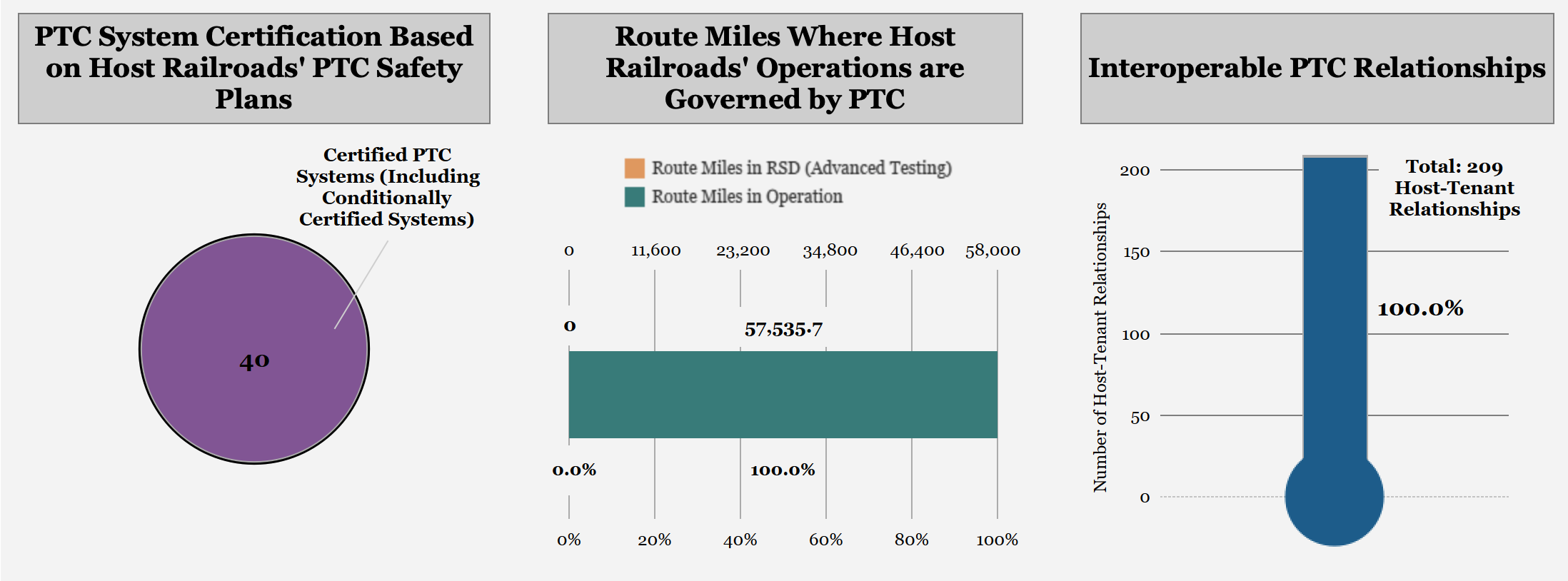The railroad industry can finally rest easy after the Federal Railroad Administration (FRA) announced the successful implementation of positive train control (PTC) across all required routes on December 29, 2020. PTC technology, which aims to safely stop trains and prevent rail collisions resulting from human operator errors, now spans over 57,000 miles of freight and passenger track, providing an extra layer of protection for goods, travelers, and workforce.
Former USDOT Secretary Elaine Chao expressed her gratitude in the announcement stating, “100 percent PTC implementation is a tremendous accomplishment and reflects the Department’s top priorities—safety, innovation, and infrastructure.”
The final PTC implementation caps off a long journey for the railroad community. PTC spent decades as a proposal, first mentioned in 1970 when the National Transportation Safety Board (NTSB) inquired FRA to study the feasibility of automatic train control to manage operator errors and prevent train crashes. It took more than 30 years and several high-profile crashes for the technology to gain significant traction in Congress. It was not until after the events of the 2008 Chatsworth Metrolink crash—which took the lives of 25 passengers and injured dozens more—that Congress passed the Rail Safety Improvement Act 2008 (RSIA) mandating PTC be required across all freight and passenger lines.
The original deadline for full implementation was December 31, 2015, but after nationwide challenges, Congress extended it to December 31, 2018 through the Surface Transportation Reauthorization and Reform Act of 2015 (H.R.3763), setting a final deadline for December 31, 2020 if railroads received approval from FRA.
Reaching this milestone was a long and expensive endeavor. According to the Association of American Railroads (AAR), the nation’s Class I railroads invested more than $11 billion to implement the technology. Union Pacific Railroad (UPRR) alone spent $2.9 billion, installing more than 10,000 wayside antennas and over 5,500 locomotive radios to ensure safety measures were met. Advancing interoperability functions also accounted for high costs, allowing PTC-enabled trains to communicate with other PTC systems and provide seamless, uninterrupted connection with all railroad carriers.

To meet PTC goals for publicly-owned freight, intercity passenger, and commuter railroads, FRA distributed federal grants totaling $3.4 billion, across programs including the BUILD/TIGER Grants Program, Railroad Safety Technology Grants, the Consolidated Rail Infrastructure and Safety Improvements (CRISI) Program, and others.
Besides the safety benefits associated with PTC, FRA assessed a myriad of other benefits associated with implementing PTC. For example, railroads could leverage the technology to safely improve service reliability, cut inbound yard time by 4.5 percent, and accrue fuel savings of 2.5 percent.
While PTC will only address a fraction of railroad safety incidents, its application should stop some particularly deadly incidents before they happen. Ian Jefferies, President and CEO of AAR, shared words of optimism following FRA’s announcement, stating “America’s railroads have reached an important milestone this year that will enhance safety and springboard innovation long into the future. While the industry is proud of this accomplishment, the job is never finished. Railroads will remain forward-looking and continue advancing safety through innovation and technology.”




